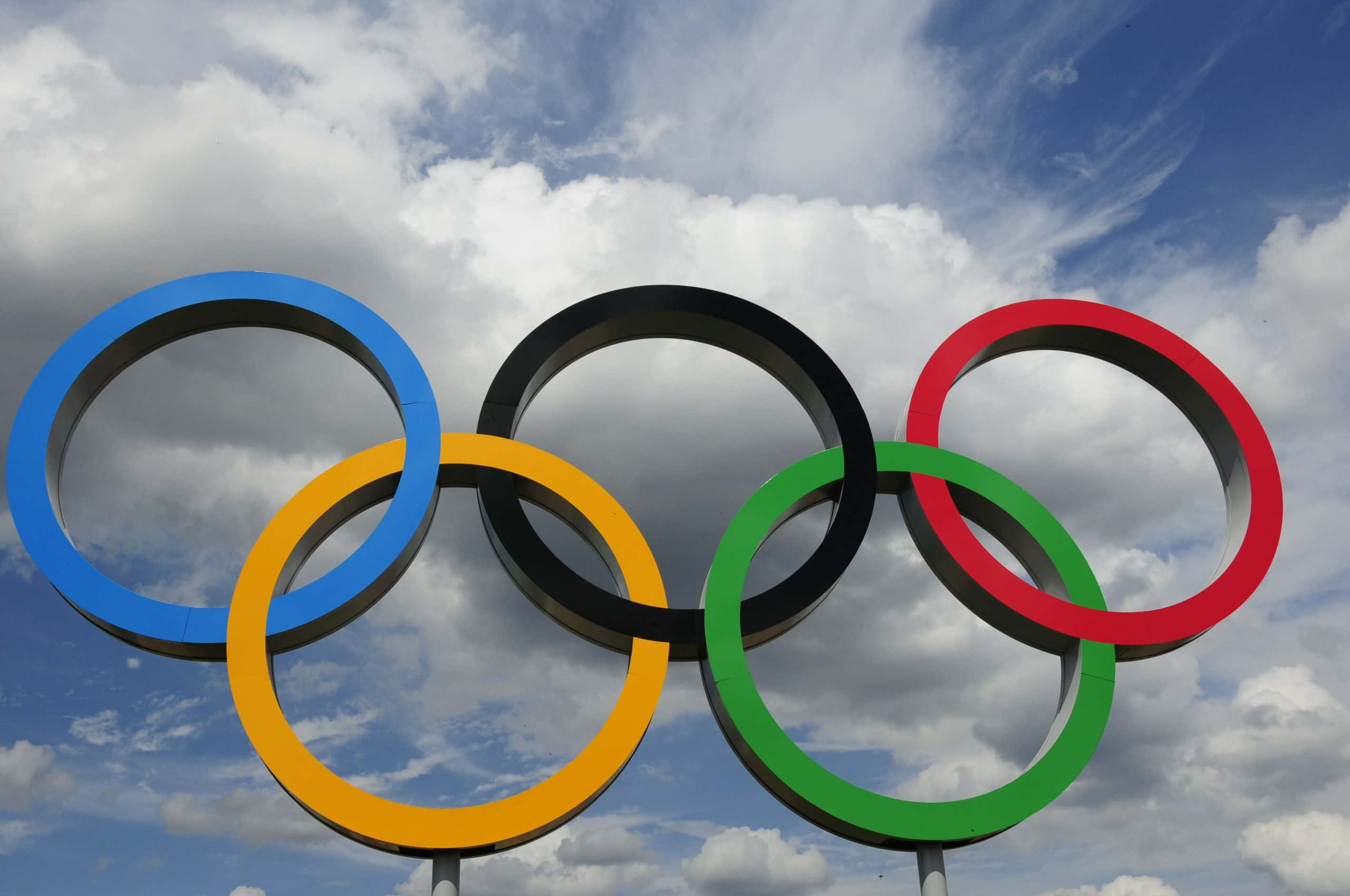Paganism has come to refer to any sort of folk religion, and generally speaking, any polytheistic religion from history. While it is often misunderstood, paganism has a fascinating and mysterious history that influences much of our society today. From major holidays to decor, Paganism's afterlives are all over modern culture.
Here are some of the most occult facts about Paganism.
1. Before Paganism
Dating back to the Paleolithic Age, Animism is considered the world's oldest religion. It would be through the ideas of animism—the perception that all things and objects, whether they are a person, flower, or rock, are alive and have a soul—that Paganism would rise.

2. A Way To Create An “Other”
The use of the word “paganism” dates back to the fourth century when the early Christians who lived inside the Roman Empire formulated the word as a way to refer to the other people of the empire who practiced polytheism.
 Wikimedia.Commons
Wikimedia.Commons
3. Rome Turns On Pagans
When Rome turned to Christianity, many tensions between pagans and Christians began growing. But, it wasn’t until Constantius II came along in 337 that the Empire took extreme measures in promoting Christianity and oppressing Roman polytheism. He issued anti-pagan laws that included the death penalty for anyone caught performing a pagan sacrifice and closed all pagan temples.
Despite that, during his reign, many senators were passive about the suppression and persecution wasn’t widespread. Paganism lived on.
4. War Against The Pagans
It wasn’t until Theodosius I, under the influence of Ambrose, the Bishop of Milan, came along that pagans were actively targeted at every level. Under his reign, pagan priests were killed and holy sites destroyed. Theodosius essentially waged war against the pagans.
 Wikimedia.Commons
Wikimedia.Commons
5. Ending The Olympics
Through his harsh laws against the pagans, Theodosius also banned something we still have today: the Olympics. Yup, the Olympics were originally a pagan ritual! Because of this, Emperor Theodosius decided to suppress them. But he may not have been as successful as he thought. Some archaeologists believe that the games continued despite his ruling, supporting their claims with artifacts that just don't fit Theodosius' story.
6. Rural Peoples
As Christianity was an urban phenomenon in its beginning, the people that were grouped together as “pagans” by the Christians were predominantly from the countryside. Midsommar vibes, anyone?
7. Ivy Reputation
The cult of Bacchus believed ivy to be the symbolic plant of their deity. Bacchus was often depicted wearing a crown of ivy, as it was also a symbol of eternal life. As the god of wine and, well, partying (#HailBacchus), early Christians refrained from using ivy inside of their churches. Instead, they only used it as exterior decorations. This tradition still continues in churches today.
9. Replacement Festival
In addition to Easter, St. Patrick’s day was also created as a way to replace the Pagan festival of Ostara. This means that in current times, when we drink green beer and wear green on St. Paddy's day, we are also celebrating the rebirth of Mother Nature. So ipso facto, getting toasted is kind of religious? Hmm...
10. The Fortune of Oak
Many Pagans worshipped oak trees because oak was a sacred object to Zeus, the major figure in Greek mythology. In fact, the Celts would only have meetings in the presence of an oak tree. The expression “knock on wood” actually refers back to the Celts. Like the Greeks, they believed in the good fortune of touching sacred oak trees.
11. Pagan Roots
The roots for what we consider Paganism go all the way back to various different Greek and Egyptian cultures. Many of their beliefs influenced the Romans and spread throughout the ancient European continent.
12. God and The Ladybug
The main god of the ancient Finnish pagan religion that dominated Finland and Estonia prior to Christianity was Ukko. While Ukko shared similar traits to Thor, the Norse god, he had some interesting traits of his own. The result of him having intimate time with his wife Akka was thunderstorms, and his sacred animal was the ladybug. In fact, ladybugs were known as “Ukko’s Cow". (Because they are...speckled?)
13. Finnish Wizards
Due to the large role of shamanism in their religion, the Finnish pagans were known by their neighbors as “wizards". Because of this reputation, Finnish pagans have a strange afterlife. They're often represented as supernatural presences in many old Norse stories. They were also feared by many of the other Baltic peoples.
 Unsplash
Unsplash
14. Creators of The Alphabet
It was the Canaanites, though who lived in the ancient Levant, who created what would come to be the modern Alphabet. They simplified cuneiform, making it easier to learn and easier to spread around the surrounding regions. It was then adopted by many and evolved and influenced the writing forms of the Mediterranean. It would be the Greek who added vowels to the alphabet, which subsequently influenced the Latin alphabet and...here we are!
15. Ancient Rodeo
Inhabiting Crete before the Greeks that we now consider to be the founders of Western culture, the Minoans thrived for many years. However, like many early pagans, we don't have a lot of knowledge about them, except what we can gather from archaeological sites and cave paintings. (The Minoans didn't have a centralized text, like a major political or religious document, which makes it hard to understand their culture).
But the glass is half full, not half empty! The cave paintings and digs taught us something crucial (and to be honest, kind of cool) about the Minoans. They competed in a contest much like modern rodeo. At this public gathering, the Minoans would chase after bulls and even attempt to ride them. If you've ever ridden a mechanical bull at a bar, you have the Minoans to thank.
16. Attested Pagan
It wasn’t until the 17th century that the word “pagan” would become attested in English, joining the ranks of pejorative Christian words such as “infidel” and ”heretic".
17. Holly Wreaths Pagan Origin
In order to avoid persecution while living in the Roman Empire, early Christians would mimic the pagan tradition of celebrating the winter solstice holiday of Saturnalia. How? Well, one method might be familiar to modern readers. Early Christians would place pagan-esque wreaths of holly around their homes.
 Pixabay
Pixabay
18. Under The Mistletoe
The custom of hanging mistletoes dates back to early pagan religions all over the world, including the Celts, Norse, and even Native Americans. The Celtic Druids (priests) used the mistletoe as a symbol of peace. There was a Celtic tradition where if enemies were to meet under a mistletoe, they had to agree on a truce for the rest of the day and lay down their arms.
19. Symbolic Snakes
Everyone’s favorite Irish holiday, St. Patrick’s Day. Most people know that we celebrate this boozy holiday in honor of St. Patrick, who drove the snakes out of Ireland. What is not usually understood, however, is that the snakes are a symbolic stand-in for pagans. Patrick worked hard to drive the pagan Celts off of the island. So, what people actually drink to is the conversion of Celts to Christianity. And if not their conversion, well, then...do I really need to spell it out for you?
20. Easter Surprise
The Pagan holiday of Ostara set the stage for the Christian holiday of Easter. Originally, Ostara celebrated the spring equinox. The Pagan tradition included classic elements from the bunny rabbit and eggs to the word “Easter" itself. The goddess Eostre (from the Pagan tradition) sounds a lot like the word Easter for a reason.
 Pixabay
Pixabay
21. Father “Odin”
Many people know that St. Nicholas is the root of Santa Claus (fair enough! We call him old St. Nick for a reason, after all). But the links go ever further than just the name. We base our image of Santa Claus on the Norse pagan god Odin. Think about it. Both are older men with his chubby cheeks and majestic white beards.
22. Mulled Drinks
During the winter, Anglo Saxon pagans drank a concoction of mulled ale, curdled creams, eggs, spices, sugar, and apples in the name of good health, or “waes hael” (hence, wassail). Over the years, these traditional drinks morphed into eggnog and mulled wine drinks. So if you think of it, in a way, even something like the Starbucks Eggnog Latte kind of has pagan origins…
 Unsplash
Unsplash
23. Carolling For Joy
During the solstices, pagans would go around singing songs of celebration and joy for each of the seasons. We derive the modern for this, “carol,” from this tradition, since carol means a song of joy. Sadly, all we get out of it now is strangers showing up on our doorstep to share their off-key melodies.
24. Powerful Symbols
Thor’s hammer is the most famous of these symbols to survive, but actually, the Germanic pagans used it interchangeably with two other well-known symbols: the sun wheel and the infamous swastika. During the Bronze Age, all throughout the Indo-European world (not just in the ancient Germanic world), these symbols were considered synonymous and often drawn onto hammers.
 Shutterstock
Shutterstock
Sources: 1, 2, 3, 4, 5, 6, 7, 8, 9

























